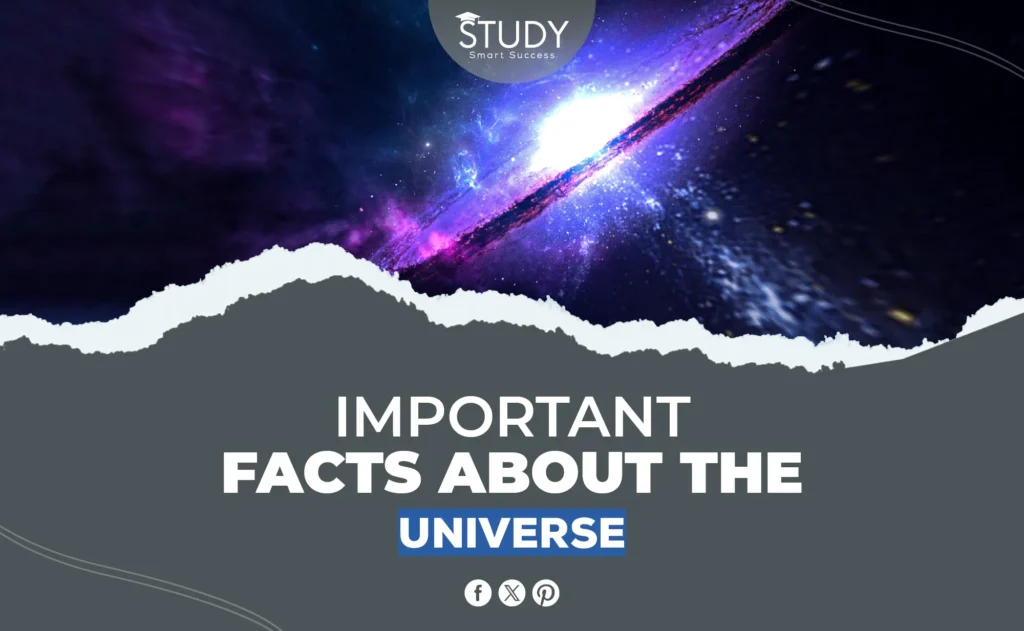Introduction
The universe is a huge, mysterious place that we all find fascinating. Scientists, thinkers, and dreamers have been interested in it for hundreds of years because it is so big and complicated. This blog post is meant to be a journey through twelve interesting facts about the universe for both experienced astronomy fans and teachers.
From the huge size of the universe to the mysterious realms of the multiverse, each fact shows a different side of how mysterious the universe is. Come with us as we weave our way through the cosmic tapestry and look into each discovery in more depth.
Read more about stars and galaxies.
The Age and Size of the Universe
Cosmic knowledge depends on understanding the universe’s age and vastness. Detailed observations of cosmic microwave background radiation and galaxies’ expansion rate revealed that the universe is 13.8 billion years old. Numerous galaxies, stars, and other celestial wonders occupy the observable universe, which is 93 billion light-years wide.
The universe is very big, which shows that it has a long and changing past. As our tools and technology improve, we discover more about the universe’s secrets.
Dark Matter and Dark Energy
The Dark matter and dark energy are the universe’s most enigmatic components. Dark matter, which doesn’t radiate light, accounts for 27% of universal mass energy. Its gravitational pull holds galaxies together, affects their rotation speeds, and shapes the universe. Dark matter, one of astrophysics’ greatest mysteries, cannot be directly observed since it does not interact with electromagnetic forces.
Dark energy, which comprises 68% of the universe’s mass-energy content, is thought to accelerate its expansion. This unknown force opposes gravity and is assumed to permeate space, pushing galaxies apart. Dark energy challenges our understanding of physics and the universe’s fate, making it a key cosmological challenge. Scientists are studying and experimenting to understand these mysterious cosmic components.
The Cosmic Web
Dark matter and galaxies constitute the universe’s large-scale structure in the cosmic web, an intricate network depicting the distribution of galaxies throughout the universe. The cosmic web reveals the universe’s creation and dark matter’s effect on galaxy clustering. It also illuminates the universe’s billion-year evolution and future.
Black Holes
Black holes are among the universe’s most mysterious phenomena. They are formed from huge stars and have gravitational forces so powerful that light cannot escape. Large black holes at the centers of galaxies are crucial to their genesis and evolution. Their massive gravitational forces affect star and gas dynamics and galaxies’ growth and structure.
Diverse Galaxies
Different galaxies have different diameters. The Milky Way’s spiral arms include stars, gas, and dust that rotate around a central bulge. Galaxies with star-forming arms shine brightly. Ellipse galaxy stars are spherical, older, and cooler. They form few stars because they lack spiral structure and interstellar elements. Gravitational interactions or collisions with neighboring galaxies typically create chaotic, irregular galaxies.
This astonishing diversity of galaxy types reveals how they evolve and shape. Galaxy formations show galaxy interactions, mergers, and dark matter’s impact on the universe. From galaxy formation to large-scale structure, galaxy diversity illuminates the universe’s history and complexity. Research is needed to solve the cosmic enigma and understand the forces that have shaped our world over billions of years.
Cosmic Microwave Background (CMB)
The universe’s faint glow is the cosmic microwave background (CMB) originating from the Big Bang. Discovered in 1965, the CMB is a vital relic of the early universe, showing it to be 380,000 years old. This radiation reveals the universe’s early conditions and helps scientists understand its composition.
The Multiverse Theory
According to the multiverse theory, our universe is one of many. This idea, currently debated, questions reality and has major philosophical ramifications. Some physicists believe separate universes have different physical principles, creating diverse cosmic landscapes. Exploring the multiverse theory makes us think about our knowledge boundaries and the wonders beyond our universe.
Neutron Stars
These stars are dense leftovers of huge stars that collapse due to gravity. Neutron star material weighs as much as a mountain and is practically completely neutrons. Neutron stars are cosmic labs that reveal matter’s extreme behavior. Their research helps us understand nuclear physics and star lifecycles.
Redshift
Light from distant objects moves toward the red end of the spectrum, causing redshift. The expansion of the cosmos stretches light wavelengths as they move through space. Astronomers need redshift to measure cosmic distances and prove the universe’s expansion. Redshift helps scientists understand the universe’s history and evolution.
The Big Bang
The main explanation is the Big Bang theory, which proposes that the universe originated as a hot, dense point 13.8 billion years ago. The cosmic microwave background, light element abundance, and cosmos expansion support this theory, which cosmology relies on to explain the universe’s creation and evolution.
The Temperature of Space
Despite its empty status, space’s cosmic background temperature is 2.7 Kelvin (-454.8°F). This low temperature, a remnant of the Big Bang 13.8 billion years ago, may indicate the universe’s expansion and history. Cosmic microwave background radiation and sunlight from billions of stars and galaxies heat space to near-freezing. These elements reveal the universe’s structure and billion-year processes to astronomers.
Star Formation
Star formation actively shapes and evolves the universe. Stars emerge from gas and dust clouds that collapse under gravity to initiate nuclear fusion. Energy and light are released, forming bright stars in galaxies. Star formation is crucial to galaxies’ lifecycles and the generation of life-sustaining components. Learn about cosmic creation from this procedure.
Conclusion
The universe is enormous and full of fascinating events that inspire scientific investigation. Dark matter and dark energy are mysterious, and the multiverse idea has far-reaching ramifications. These discoveries deepen our grasp of the universe’s origins, structure, and development, driving us to explore.
These facts help astronomers and educators discover more. Current cosmological advances offer intriguing new discoveries about the universe. As we gaze at the sky, remember that the universe’s story is ours—one of cosmic amazement and unbounded inquiry.


